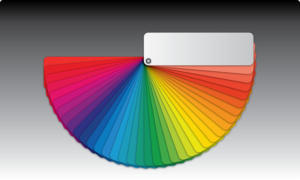
You can’t choose a display without considering its contrast ratio. Contrast ratio, of course, represents the difference between a display’s light colors and dark colors. A high contrast ratio means the display produces a wider range of colors, specifically light and dark colors. While all displays have a contrast ratio, though, some of them have a dynamic contrast ratio.
Overview of Dynamic Contrast
Also known as contrast enhance, dynamic contrast is similar to standard contrast. It’s a measurement of the difference between a display’s light colors and dark colors. Displays with dynamic contrast, however, are able to adjust their brightness level to achieve a better viewing experience.
How Dynamic Contrast Works
Dynamic contrast is available as an optional feature in many new displays. You can find it in liquid-crystal displays (LCDs), for instance. Whether you’re shopping for an LCD television, computer monitor or other display, it may support the use of dynamic contrast.
Assuming you choose an LCD that supports dynamic contrast, you can either enable or disable this feature. When enabled, dynamic contrast will result in darker shades of black and lighter shades of white colors. The end result is a crisper, more colorful image that looks amazing for movies and videos.
Of course, you don’t have to run dynamic contrast all the time. You can toggle it on and off. When running dynamic contrast, you may notice artifacts. This feature will increase your display’s contrast ratio, which can lead to artifacts. If you notice any artifacts, disabling dynamic contrast will typically resolve this visual phenomenon.
Benefits of Dynamic Contrast
Displays with dynamic contrast are gentler on the eyes than those without this feature. They can reduce eye strain in low-light conditions. If you’re using a display at night, for instance, you may develop eye strain after staring at it for several hours. Dynamic contrast can protect you from eye strain by making the image easier to see.
Dynamic contrast will minimize shadows. Shadows are less likely to occur with displays that have dynamic contrast. They can eliminate unintentional shadows by creating darker black colors and lighter white colors.
As previously mentioned, dynamic contrast can be toggled on and off. You don’t have to run it all the time. If you want to lower the contrast, you can disable dynamic contrast. Dynamic contrast is an optional feature, and you can turn it off at any time.
